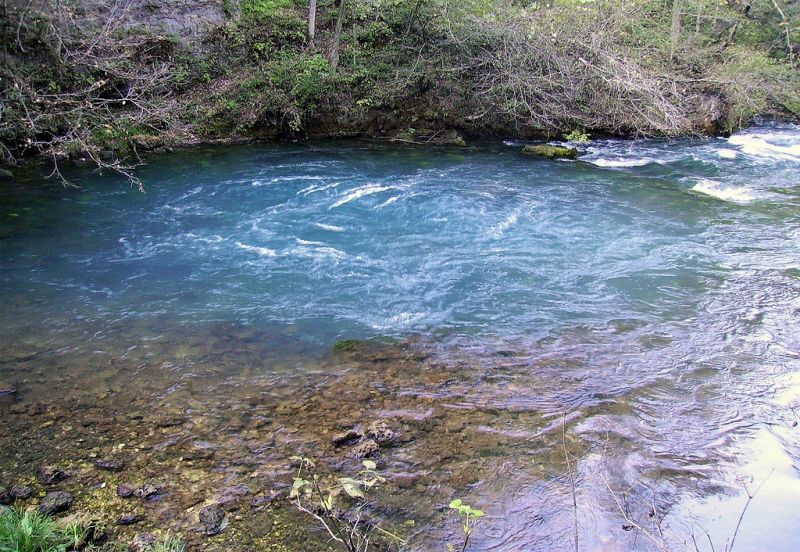Groundwater Pollution and Sources of Contamination
Published on by Water Network Research, Official research team of The Water Network in Academic
Over 50% of the United States population depends on groundwater for drinking water. Groundwater is also one of our most important sources of water for irrigation. Unfortunately, groundwater is susceptible to pollutants.
 Groundwater contamination occurs when man-made products such as gasoline, oil, road salts and chemicals get into the groundwater and cause it to become unsafe and unfit for human use.
Groundwater contamination occurs when man-made products such as gasoline, oil, road salts and chemicals get into the groundwater and cause it to become unsafe and unfit for human use.
Materials from the land's surface can move through the soil and end up in the groundwater. For example, pesticides and fertilizers can find their way into groundwater supplies over time. Road salt, toxic substances from mining sites, and used motor oil also may seep into groundwater. It is possible for untreated waste from septic tanks and toxic chemicals from underground storage tanks and leaky landfills to contaminate groundwater.
DANGERS OF CONTAMINATED GROUNDWATER
Drinking contaminated groundwater can have serious health effects. Diseases such as hepatitis and dysentery may be caused by contamination from septic tank waste. Poisoning may be caused by toxins that have leached into well water supplies. Wildlife can also be harmed by contaminated groundwater. Other long term effects such as certain types of cancer may also result from exposure to polluted water.
POTENTIAL SOURCES OF GROUNDWATER CONTAMINATION
Storage Tanks
May contain gasoline, oil, chemicals, or other types of liquids and they can either be above or below ground. There are estimated to be over 10 million storage tanks buried in the United States and over time the tanks can corrode, crack and develop leaks. If the contaminants leak out and get into the groundwater, serious contamination can occur.
Septic Systems
Onsite wastewater disposal systems used by homes, offices or other buildings that are not connected to a city sewer system. Septic systems are designed to slowly drain away human waste underground at a slow, harmless rate. An improperly designed, located, constructed, or maintained septic system can leak bacteria, viruses, household chemicals, and other contaminants into the groundwater causing serious problems.
Uncontrolled Hazardous Waste
In the U.S. today, there are thought to be over 20,000 known abandoned and uncontrolled hazardous waste sites and the numbers grow every year. Hazardous waste sites can lead to groundwater contamination if there are barrels or other containers laying around that are full of hazardous materials. If there is a leak, these contaminants can eventually make their way down through the soil and into the groundwater.
Landfills
Landfills are the places that our garbage is taken to be buried. Landfills are supposed to have a protective bottom layer to prevent contaminants from getting into the water. However, if there is no layer or it is cracked, contaminants from the landfill (car battery acid, paint, household cleaners, etc.) can make their way down into the groundwater.
Chemicals and Road Salts
The widespread use of chemicals and road salts is another source of potential groundwater contamination. Chemicals include products used on lawns and farm fields to kill weeds and insects and to fertilize plants, and other products used in homes and businesses. When it rains, these chemicals can seep into the ground and eventually into the water. Road salts are used in the wintertime to put melt ice on roads to keep cars from sliding around. When the ice melts, the salt gets washed off the roads and eventually ends up in the water.
Atmospheric Contaminants
Since groundwater is part of the hydrologic cycle, contaminants in other parts of the cycle, such as the atmosphere or bodies of surface water, can eventually be transferred into our groundwater supplies.
Read the full article about Groundwater contamination at Groundwater Foundation
Media
Taxonomy
- Water Pollution
- Pollution
- Groundwater Pollution
- Groundwater Quality & Quantity
2 Comments
-
And to think that People-in-Power who should know better, but instead demonstrate ignorance and ill-respect to all Life, believe that direct re-charge of groundwater with poorly treated wastewater is a smart thing to do - Go Figure?!
-
@ Groundwater Pollution and Sources of Contamination.
Stable isotope (18O) can help to assess the sources and processes governing fluoride and nitrates contamination of groundwater.
References: 1. P.S. Datta et al, Journal of Contaminant Hydrology 24 (1996) 85-96.
2. P.S. Datta et al, Journal of Contaminant Hydrology 27 (1997) 249-262